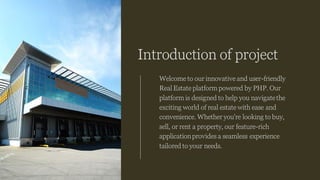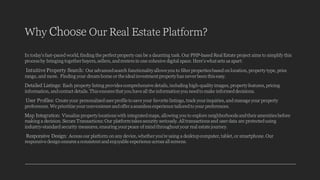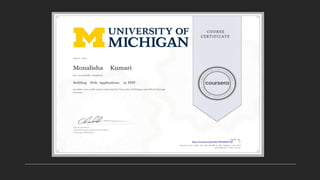一比一原版(osu毕业证书)美国俄勒冈州立大学毕业证如何办理
- 2. Technical Learnings from the course: The course I selected as the Summer Training Program is “Building Web Applicationin PHP.” The course is offered by University of Michigan with help of the Coursera platform. The Learning outcomes of this course is as follows: Week 1: We looked at the basic structure of a web applicationand how a web browser interacts with a web server. We explored the Request- Response Cycle that is the basis of the Hypertext Transfer Protocol. We learned how the http works with the websites. Week 2: 6 In the second week, we covered the basics of the HyperText Markup Language (HTML)that is the markup for web pages. HTML is responsible for the development of the front-end structure of the webpages. We learnt the basic HTML for creating the skeleton of any website.
- 3. Week 3: We covered the basics of cascading Style Sheets (CSS) that allow us to style the markup for web pages. CSS is responsible for styling the webpages to make it user-friendly and visually appealing so that it becomes handy to use. Week 4: This week, we learnt how to work through the installation steps including installing a text editor, installing MAMP or XAMPP (or equivalent), creating a MySQL Database, and writing a PHP program. We were introduced to the concept of PHP programming. Week 5: We understood the core PHP concepts such as variables, expressions and control structures such: if-else, ladder if- else. Week 6: This week, we learned more PHP concepts such as arrays in PHP, array() method for creating arrays in PHP. Week 7: We learned deeply about the functions in PHP and how to implement it in real. Functions are used to supportcode reusability. We also learned the modular programming approach in PHP. Week 8: 7 We understood how to work with google forms and how to take data from html to the PHP using the Get and Post methods available in PHP. After that we can easily connect our page with database and send our data into our MySQL database.
- 4. REAL ESTATE WEBSITE M O N A L I S H A
- 5. Introduction of project Welcome to our innovative and user-friendly Real Estate platform powered by PHP. Our platform is designed to help you navigatethe exciting world of real estate with ease and convenience. Whether you're looking to buy, sell, or rent a property, our feature-rich applicationprovides a seamless experience tailored to your needs.
- 6. Why Choose Our Real Estate Platform? In today's fast-paced world, finding the perfect property can be a daunting task. Our PHP-based Real Estate project aims to simplify this process by bringing togetherbuyers, sellers, andrenters in one cohesive digital space. Here's what sets us apart: Intuitive Property Search: Our advancedsearch functionalityallows you to filterproperties based on location, property type, price range, and more. Finding your dream home or the ideal investment propertyhas neverbeen this easy. Detailed Listings: Each property listing provides comprehensive details, including high-qualityimages, propertyfeatures, pricing information, andcontact details. This ensures that you have all the information you needto make informeddecisions. User Profiles: Create your personalizeduserprofile to save your favorite listings, track yourinquiries, and manage your property preferences. We prioritize yourconvenience andoffera seamless experience tailoredto your preferences. Map Integration: Visualize propertylocations with integratedmaps, allowing you to explore neighborhoods andtheiramenities before making a decision. Secure Transactions:Our platformtakes security seriously. All transactions and userdata are protectedusing industry-standard security measures, ensuring yourpeace of mind throughout your real estate journey. Responsive Design: Access our platform on any device, whetheryou're using a desktopcomputer, tablet, or smartphone. Our responsive design ensures a consistent andenjoyable experience across all screens.
- 7. Scope of the project The scope of a real estate project in PHP can vary widely based on the specific goals and features you want to implement. Here's an overview of the potential scope for a real estate project: 1. User Authentication and Profiles: User registration and login functionality. User profiles for buyers, sellers, and agents. Profile management, including editing personal information, uploading profile pictures, and viewing saved properties. 2. Property Listings: Ability for sellers and agents to create property listings. Property details such as type (residential, commercial, etc.), location, price, area, features, and description. Multiple images for each property listing. 3. Property Search and Filtering: Advanced search functionality with filters based on location, property type, price range, area, amenities, etc. Search results displayed in a user-friendly format
- 8. 4. Property Detail Pages: Individualpages for each property listing displaying all relevant details. Option to contact the seller/agent for inquiries. 5. Map Integration: Display property locations on an interactive map. Geolocation services to find properties near the user's current location. 6. Favoritesand Saved Searches:Allow usersto save favorite properties.Providethe ability to save search criteria for easy future reference. 7. Contact and Communication:Contact formsor direct messagingsystem for usersto communicate with property sellers/agents.Notificationsfor new messagesand inquiries. 8. Admin Dashboard:Admin panel for managing property listings,user accounts, and reported content. Ability to approveor reject new property listings. 9. Property Analytics: Provideinsights to sellers and agents about the performanceof their listings (views, inquiries, etc.).
- 9. 10. Responsive Design: - Ensure the platform is responsive and usable on various devices, including desktops, tablets, and smartphones. 11. Payment Integration (Optional): - Integration of payment gateways for listing fees, featured listings, or premium services. 12. SEO Optimization: - Implement SEO best practices for better search engine visibility. 13. Privacy and Security: - Ensure secure data handling and user privacy through encryption and other security measures. 14. Performance and Scalability: - Design the project to handle a potentially large number of users and property listings. 15. Testing and Quality Assurance: - Thoroughly test the platform to identify and fix bugs, glitches, and usability issues. 16. Documentation: - Provide user documentation and guides for using the platform.









